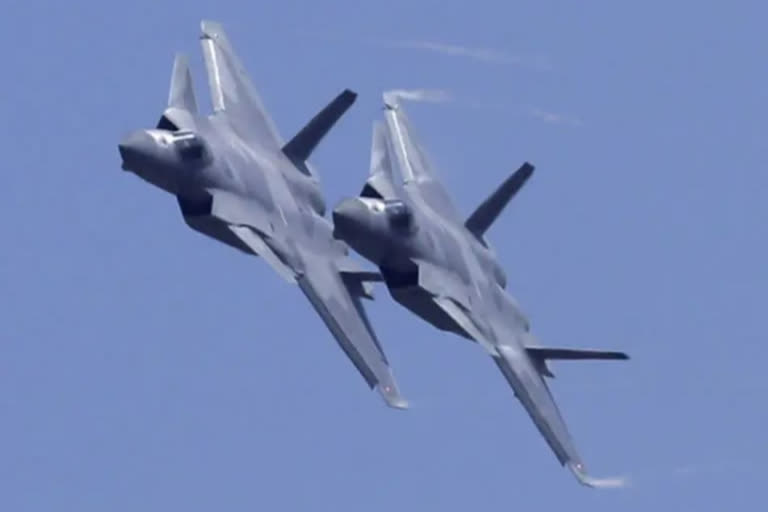New Delhi: Painted in a resplendent yellow to signify its prototype status, a J-20 fighter of the People’s Liberation Army Air Force (PLAAF) was recently spotted flying from the airbase at Chengdu, home to China’s cutting-edge fighter. What turned heads, however, was the two-seater cockpit of the fighter—an unprecedented development for fifth-generation aircraft with ‘low-observable’ configuration.
While a twin-seater fifth-generation fighter has been an endeavour of the US, the military implication is obvious and it is huge. With Yang Wei, chief designer of the J-20, having ruled out a trainer variant—which is why many fighters have two seats—at a media interaction at the Airshow China 2021 in September, experts can only guess what the co-pilot is meant for.
The most plausible explanation could be that with the main pilot totally focused on operating the craft and the military assets, the co-pilot could well be operating autonomous drones and other payloads, taking modern military warfare to unchartered territories. Experts opine that development has the potential of changing the way future wars will be fought.
Only the world’s third stealth fighter aircraft to be deployed after the F-22A Raptor and the F-35 Joint Strike Fighter both of which are with the US military, about 150 are presently being operated by the PLAAF.
Another twin-seater medium size stealth fighter that is on the anvil on the Chinese horizon is the FC-31 (also called J-31), which is believed to be meant for the People’s Liberation Army Navy (PLAN) upcoming aircraft carrier which will be the third one after ‘Liaoning’ (of Soviet origin) and the ‘Shandong’—the first domestically built aircraft carrier that was commissioned in December 2019. The third carrier—the second domestically made—is expected to enter service by 2024.
Besides the J-20, for which mass production has begun, and the FC-31, a strategic stealth bomber is also being developed (possibly called the H-20) that would have a likely range of more than 8,500 km, a payload of at least 10 metric tons, and capability to operate both conventional and nuclear weaponry.
Another key member of the stealth family is the recently unveiled GJ-11 ‘Sharp Sword’ stealth armed reconnaissance drone, reportedly the most cutting-edge UAV in the world.
With a wingspan of 14 metres, the GJ-11 has a range of 4,000 km, a top-speed of 1,000 km, a payload that comprises both guided precision weapons and heavier weapons, and a capability to launch decoys at hostile targets.
The Pentagon's recently-released report “Military and Security Developments Involving the People’s Republic of China” says: “In addition, the PLAAF is seeking to extend its power projection capability with the development of a new stealth strategic bomber, with official PRC state media stating that this new stealth bomber will have a nuclear mission in addition to filling conventional roles.”
“The PLAAF is also developing new medium- and long-range stealth bombers to strike regional and global targets. PLAAF leaders publicly announced the programme in 2016, however, it may take more than a decade to develop this type of advanced bomber,” the report adds.
The PLAAF and PLAN Aviation together operate about 2,250 combat aircraft that includes fighters, strategic bombers, tactical bombers, multi-mission tactical, and attack aircraft. Along with other flying manned assets, it is the third largest aviation force in the world.
With more than 355 ships and submarines, the PLAN is the world’s largest navy in numbers with ambitions to grow to a 420-ship-strong force by 2025 and to 460 ships by 2030.
Also read: China, US in talks on military relations amid strained ties



